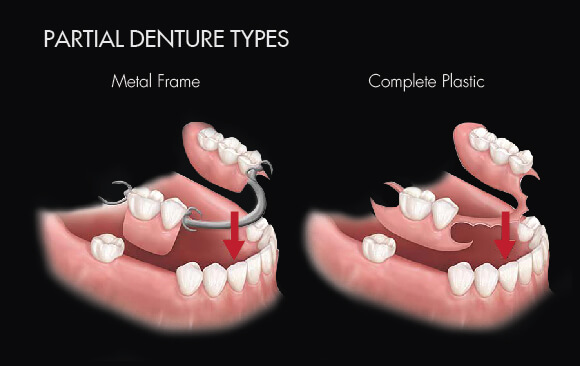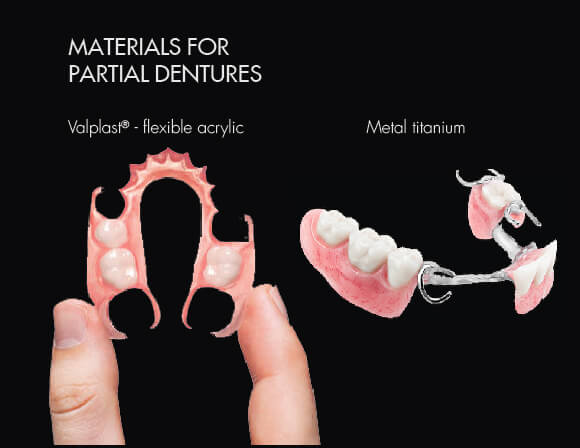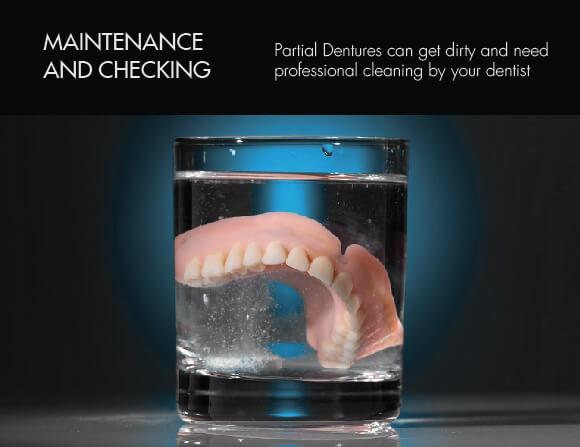Partial Dentures in Vietnam (Part One): Top 10 Considerations for Getting Partial Dentures
What You Should Know About Getting Tooth Replacement by Partial Dentures in Vietnam.
Dentures are a highly recognizable feature of dentistry - many people have memories of a grandparents who slipped out their teeth and put them in a glass next to the bed before going to sleep - but what are partial dentures?
Partial dentures are actually just as easily identifiable, and can be defined as a denture worn when only some teeth are missing from the jaw. If you do have a few missing teeth, you would slip a partial denture into the mouth as a plate with one or more false teeth on it to fit in between any healthy teeth that remain there. They’re mostly chosen by people who need teeth replacement for the reasons that the cost of having them made is substantially less than that for dental implants or bridges. Sometimes they can be worn as a temporary prosthetic until bridges or implants are placed later as a final treatment.
People who have been missing some of their teeth for a while can find partial dentures a huge relief, and they do have some advantages. While you do need to give it some practice if you choose to wear a partial denture, the experience of eating food is much smoother, as chewing is vastly improved with the gaps removed. There’s also a benefit to speaking: the fact that the tongue and lips rest on a removable piece of plastic can alter certain sounds, meaning you need to grow accustomed to a more careful and deliberate mode of speech. This often leads to pronouncing your words with far more clarity, resulting in more confident speaking patterns.
The big question is, if you need tooth replacement, should you go for partial dentures or another solution? Here’s the first installment of our top 10 secrets and important factors to share about partial dentures, helping you understand this option and how it may be a fit for you as you consider tooth replacement in Vietnam. Check through these secrets to failure and success before making your decision.
#10. You need to get used to them - but guess what? Some people never do
As with anything your body has to adapt to, such as a cast or a hearing aid, time is needed to fully adjust. With a partial denture, try to keep it in your mouth for extended periods and ignore the fact that it’s there. Initially it will feel intrusive, awkward or bulky, but after a few weeks, the sensation should become familiar - by which time you’ll have become accustomed to wearing them. It will also take a good deal of practice before you can insert or remove them easily.
One surprising fact, however, is that most dentists have made many partial dentures that their patients never wear, due to the fact that there are a percentage of people who simply don’t like the feeling of them in their mouth. If they are poorly manufactured or not maintained, they can also irritate parts of the mouth or become horribly loose when chewing food. There are other factors too - such as a large tongue size, speaking interference, or simply a psychological dislike for something foreign in the mouth that leads to a failure to adapt to the partial denture.
#9. The design is critical so that you may want to ask a few questions about it - after all, you’re paying for it.
It’s a well-known secret in dentistry that most dentists don’t even bother to design your partial denture, leaving the dental lab to do the design and manufacture. While this can be effective and time saving for some dentists, it can lead to problems where detailed decisions are made by the lab without the dentist’s consent or advice. The problem is mainly with intricate design features such as the location of clamps, the placement of undercuts and resting platforms that will decide on how well it stays in your mouth and how good it looks.
Your role should be to inquire what design is best for your hard-earned cash. You could ask your dentist, "what type of partial design are you considering for me?", or "Will it be mainly tooth supported?", or even "Is there a type of design that can minimize rocking on my existing teeth?" These key questions can help you to alert the dentist that you want a thorough analysis of the design for the best result. He/ she might even show you a proposed wax-up or drawing before it’s made to satisfy your questions.
Furthermore, if you care about aesthetics and you’re replacing your front teeth, you may want to ask "Will the partial denture show any metal clasps? Is it possible to eliminate showing any metal when I open my mouth or smile?" These questions will steer your dentist to study and prepare a more aesthetic design.
#8. If you don’t wear it for a few weeks, it won’t fit and you’ll have to throw it away.
You may not know that if you don’t wear your partial dentures for even just a few weeks, the fit may change and you may need to have a new set made. This builds on #10 above, in that many people simply don’t want to wear partial dentures even after investing in them, finding out weeks later that they don’t fit anymore. This can be due to the sudden movement of a tooth in the mouth that can distort the fitting of the whole partial denture. If this happens, don’t put it in and see your dentist immediately to determine if tooth movement has occurred. Even so, you don’t have to wear them all the time. If you have a bad bite, gum disease or recent dental work done, your old denture may become obsolete. At Westcoast Dental, we recommend that you address all these potential issues before splurging on a new set of partials.
Your dentist will most likely give you specific instructions about how often and how long you need to wear your partial denture.
#7. Not all partials last for the same amount of time. The materials are different, and they can break if you don’t treat them carefully.
Materials for partial dentures can vary by a lot. There are flexible plastic ones (Valplast®), metal titanium ones, cobalt chromium ones and dozens of different plastic acrylic material types. Even plastic teeth can vary substantially from cheap, easy-to-wear-down teeth to very durable zirconium or ceramic teeth. Of course, your fee will reflect the materials used.
Notably, since partial dentures are removable, popping them on and off aggressively and not taking care of them properly, can lead to them in end up in pieces, or dislodged tooth (teeth) or even a break in the clasp. Dentures can break if you drop them, so be sure to clean them over a bowl of water or a folded towel to ensure a soft landing.
As long as they were manufactured well and you carefully follow your dentist’s instructions, your partial denture should last a long time. Here’s another tip too - be careful not to jam them into place by biting down on them, as this could buckle the clasps.
#6. Partial dentures need maintenance and checking - they can get dirty and will even need frequent professional cleaning by your dentist
The existing teeth used to help support your denture need periodic review. These teeth need to be checked to ensure that there is no excessive force or damage occurring to them.
Also, as mentioned in #8, you may need to have your partial adjusted and checked, as sores on your gums can occur if they are not well maintained.
Sometimes you may even have to ask your dentist to clean your partial denture for you if you notice some nasty stains that are impossible for you to remove. To avoid this, brush and soak your dentures every day in something like Listerine or Polydent to keep them in good condition. Brush them first to remove any scraps of food, just as you would brush your regular teeth - but be careful to use a non-abrasive denture cleanser instead of toothpaste. Make gentle scrubbing motions to avoid scraping grooves on the surface that could lead to a crack, and be sure to cover every surface - including those that touch the gums, especially if you use a denture fixative.
As if all those factors weren’t enough to help you make your decision on the subject of partial dentures, check out our next article for our final Westcoast Top 5 considerations to help you make the right choice for your dental care.
Read More:
Partners:



